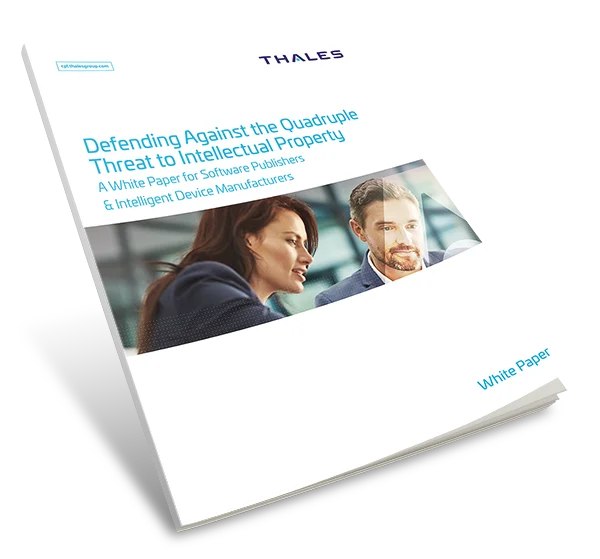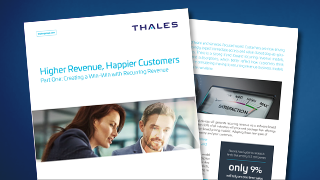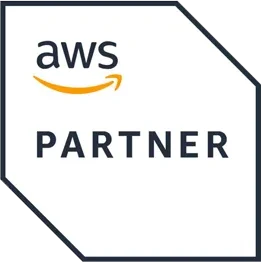What is IP Theft?
IP theft, or intellectual property theft, is the unauthorized use, reproduction, or distribution of someone else's legally protected ideas, inventions, or branding. IP theft includes stealing source code, trade secrets, logos, patented innovations, and more. Intellectual property theft is a federal crime in many jurisdictions and, for software developers poses legal, financial, and reputational risks.
Understanding and Preventing Intellectual Property Theft
In a world increasingly driven by digital assets, intellectual property (IP) has become one of the most valuable resources a business can own. For software vendors in particular, IP encompasses not just source code but also algorithms, machine learning models, and proprietary systems that power their innovations. As more software is deployed outside controlled environments, traditional legal protections alone are no longer sufficient to prevent the reverse engineering, unauthorized use, and piracy that lead to intellectual property loss.
Intellectual Property Theft and Software
Intellectual property theft is a general term for using or copying someone else's protected creations without permission. Intellectual property theft extends to brand names, designs, and even art, but also includes theft of trade secrets, patent violations, software copyright infringements, and trademark misuse.
The digital landscape has made IP theft easier and more scalable than ever. For software developers, it means that code can be extracted, replicated, or modified within minutes, and entire software systems can be pirated, resold, or reverse engineered relatively easily. Increasingly, sophisticated attackers target AI and machine learning models, aiming to either repurpose or poison them.
Common Types of Intellectual Property Theft
Intellectual property law recognizes four primary categories, each with specific vulnerabilities:
Copyright
Covers creative expressions like software code, user interfaces, and documentation. Copyright is automatically granted upon creation. Unauthorized copying or distribution of code constitutes intellectual property theft. This category includes most parts of software.
For example, software developers often embed proprietary scripts or algorithms into apps or services. If these are copied or redistributed without permission, even without direct monetary gain, it constitutes copyright infringement.
Patent
Protects inventions that are novel, useful, and non-obvious. Software patents may cover algorithms, processes, or systems. The unauthorized use of patented technology, even if it's slightly modified, is an IP infringement.
The challenge with this kind of intellectual property theft is global enforcement and prevention. Software that is patented in one place may not be protected in countries where the laws are more lenient or interpreted differently, creating enforcement gaps.
Trademarks
Protects brand identity elements—names, logos, slogans, etc. Infringement occurs when another party uses similar marks in a way that confuses consumers or dilutes the original brand.
This is particularly common in app marketplaces, where counterfeit versions of popular software may use deceptive branding. In this case, one example of intellectual property theft is used to disguise another.
Trade Secrets
Covers confidential information that provides a business advantage. For software companies, this can include source code, algorithms, or internal methodologies. This type of intellectual property theft can happen via both insider threats and hacking. Unlike patents, trade secrets do not require registration, making it harder to prove ownership and enforce rights if stolen. Developers must rely on internal controls, such as NDAs, access restrictions, and encryption.
License Violations
Although most users don't think of it as intellectual property theft, license violations can pose the same security and revenue concerns for developers. Users may install software on more devices than permitted or continue to use it after the license period ends. Unauthorized license use is a common and often unintentional form of intellectual property theft, although it is usually a matter of contract and not IP law.
white paper
Defending Against The Quadruple Threat to Intellectual Property
Security is the hardest of all projects that companies try to achieve in-house. This guide is essential reading for software providers who sell applications that run outside their own controlled cloud—whether deployed on-premises, in customer clouds, or on edge devices.
The Consequences of Intellectual Property Theft for Businesses
The financial implications of IP theft are staggering. For example, the Commission on the Theft of American Intellectual Property estimates that the cost of intellectual property theft to the US economy is hundreds of billions of dollars annually. For individual businesses, the impact includes:
- Loss of revenue: Pirated software and unauthorized use reduce legitimate sales.
- Damage to reputation: Brands can't ensure quality or provide customer support for counterfeit goods or illegally purchased software.
- Legal costs: Pursuing IP theft cases involves significant legal expense.
- Competitive disadvantage: Stolen IP allows competitors to easily copy innovations.
- Compromised data integrity: Particularly relevant for AI models, which can be poisoned or manipulated.
- Operational disruption: Rebuilding compromised systems or dealing with license abuse consumes resources and time.
Common Causes and Risks
Several factors contribute to the rise of IP theft. Which one is the biggest problem for any particular company will depend on, among other factors, the business model and type of software.
Some of the most common culprits include:
- Remote work: Increased access to sensitive data from personal devices.
- Insufficient access controls: Employees or third parties with unnecessary access.
- Lack of employee training: Human error often plays a role in data exposure.
- Cybersecurity vulnerabilities: Outdated systems and software can be exploited.
- Global distribution: Selling software across borders complicates enforcement.
- Lack of centralized asset tracking: Companies often don't know exactly where all their IP resides or who has access.
In addition to these more general risks, each sub-industry faces its own risks. For example, intellectual property theft in cyber security can lead to vulnerabilities that can endanger users. Meanwhile, the increasing dependence on AI models across various sectors exposes developers to new types of risks.
AI's rapid evolution means that we still don’t know all of its vulnerabilities, making AI a weak spot that can be targeted for intellectual property theft. The urgency to innovate and capitalize on AI’s potential makes it tempting to overlook critical aspects of security, particularly regarding data and IP protection. This can be an especially big problem for developers incorporating ML models directly into their software.
Common Examples of Intellectual Property Theft
Not all IP theft is malicious. It can vary from users not realizing the limitations of their license agreements to professional hackers intentionally breaking through locks to copy and sell software they didn't develop. Here are some of the most common routes that IP theft travels:
License Misuse
End users may continue using software after licenses expire or share passwords with friends, leading to revenue loss and uncontrolled distribution. In business environments, this can cause additional problems for users, such as security blind spots or violations of government regulations like GDPR or HIPAA.
Human Error
Employees may inadvertently share sensitive files or lose devices containing valuable data. Outdated file-sharing permissions or forgotten cloud drives can also be exploited for intellectual property theft.
Insider Threats
Disgruntled employees or contractors may leak confidential information intentionally. These threats are difficult to detect without behavioral monitoring or strict exit procedures.
External Cyberattacks
Hackers use phishing and malware or exploit vulnerabilities to access code repositories, steal data, or manipulate systems. AI models can be subjected to adversarial attacks where malicious inputs distort outputs, impacting business outcomes.
Reverse Engineering
Attackers dissect deployed software to understand and replicate its functionality, often bypassing licensing or stealing proprietary algorithms. This is especially common when software is deployed in settings where the software provider no longer has direct control, such as on-premises installations, software run on edge devices, or when employees or contractors install software on personal devices.
10-Layered Proactive Strategy to Prevent IP Theft
In today's digital landscape, safeguarding your software's intellectual property (IP) is paramount. Implementing a comprehensive, multi-layered defense strategy ensures robust protection against unauthorized access, reverse engineering, and piracy.
1. Identify and Classify IP Assets
Establish a clear understanding of what intellectual property you own, where it lives, and how critical it is to your business operations.
- Catalog all code, models, algorithms, and digital assets
- Classify assets by sensitivity and business impact
- Map where each asset is stored and who has access
2. Strengthen Legal Safeguards
Legal protections help establish ownership, deter theft, and support enforcement actions across jurisdictions.
- Draft and enforce NDAs with employees, partners, and contractors
- Register copyrights, trademarks, and patents
- Work with IP counsel to align protections with global business operations
- Build enforcement strategies for international compliance
3. Secure Development Processes
Your development environment is a prime target for attackers seeking to intercept or tamper with valuable IP. Secure it.
- Apply secure coding standards and vulnerability scanning
- Restrict access to source code repositories
- Require multi-factor authentication for dev tools and platforms
- Integrate security reviews into your CI/CD workflows
Keep Competitors from Stealing Your IP
Sentinel Envelope protects your software IP no matter where your software is deployed.
4. Encrypt and Obfuscate Code
Make your software harder to reverse engineer or misuse. Encryption and obfuscation transform your code into an unreadable form, adding a critical barrier to theft.
- Obfuscate sensitive logic and proprietary algorithms
- Encrypt binaries or selected modules at rest and during transit
- Use seamless integration so an attacker can’t isolate the original application
5. Conduct Continuous Security Testing
Stress-test your defenses to expose risks and fix security gaps that could lead to IP leakage or theft.
- Run penetration tests and code audits
- Conduct red team exercises and scenario-based simulations
- Test software under adversarial conditions, especially for AI models
- Document and prioritize remediation efforts
6. Educate and Train Employees
A security-aware workforce reduces accidental leaks and improves detection of suspicious activity.
- Train all staff on the value and risk of intellectual property
- Run phishing and social engineering simulations
- Promote secure handling of source code and documentation
- Develop and distribute response playbooks
7. Apply Access Controls
Minimize access to what’s necessary, and monitor for policy drift.
- Enforce role-based and context-aware access
- Require least-privilege access for contractors and vendors
- Use Just-In-Time (JIT) access provisioning for sensitive systems
- Regularly review and revoke stale permissions
8. Implement Robust Licensing Controls
Control who can use your software, how, and when. Licensing is your frontline defense against unauthorized usage, overuse, or redistribution.
- Employ tamper-resistant license keys and activation systems.
- Tie licenses to specific hardware or user identities.
- Ensure your licensing model restrictions (subscription, usage-based, trial) are trackable and enforceable.
9. Monitor User Behavior
Spot insider threats and unusual behavior before they cause harm. Monitoring capabilities can help detect and respond to IP theft attempts in real time.
- Track large file transfers and download patterns
- Set alerts when licenses are activated in geographically unusual access
- Integrate key disabling so that licenses cannot be activated if cracking attempt is detected.
- Use digital signature checks to ensure the entire binary were not modified
10. Build and Practice an Incident Response Plan
Respond quickly if IP theft occurs. A fast, coordinated response can minimize impact, protect customers, and preserve business continuity.
- Document step-by-step breach response procedures
- Assign incident roles and escalation paths in advance
- Simulate IP theft scenarios and run tabletop exercises
What to Do if You’re a Victim of IP Theft
If your IP has been compromised:
- Document everything: Record the incident, including when and how it was discovered.
- Engage legal counsel: Consult with attorneys to assess your options.
- Notify the offender: A cease-and-desist letter may be appropriate, and in some cases, may even be enough.
- Initiate legal action: If needed, file intellectual property theft claims through federal or international courts.
- Improve internal controls: Identify and close security gaps to prevent future incidents.
- Notify stakeholders: If customer data or business continuity is affected, you may be required to inform the public.
- Evaluate response plans: Refine incident response protocols based on lessons learned.
How Thales Sentinel Protects Against IP Theft
Building IP protections yourself is a risk not worth taking. In-house solutions are costly, complex, and rarely keep pace with evolving threats. Thales Sentinel delivers proven, enterprise-grade protection out of the box and ready to defend in even the most complex protection scenarios.
Thales’ Sentinel platform, with our market leading Envelop technology, is built by security experts who understand the real-world risks software vendors face. With Sentinel, you get a complete set of tools to protect your IP, enforce your licensing, and scale your business with confidence.






